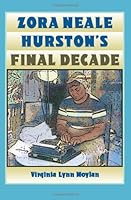 Death on the Suwannee In late September 1952, things took an unexpected turn when Zora received a job offer leading to what many judge to be her best literary writing of the period. This momentous assignment would take her deep into the bowels of Ku Klux Klan territory to Live Oak, Florida to cover the murder trial of a black woman named Ruby McCollum, who had walked into the medical office of her white lover, Dr. Leroy Adams, and shot him dead. The murder had garnered national headlines as one of the most sensational trials in the history of the South, and the Pittsburgh Courier, one of the nation’s most popular black weekly newspapers, offered Zora $1,000 to cover the court proceedings and write a 10-part biographical sketch of Ruby’s life. It was a dangerous assignment, particularly for a black female reporter; Live Oak was crawling with Klansmen who hated any meddling by members of the press and made threats against anyone, black or white, who talked to them. Never being one to shrink from a challenge, Hurston accepted the assignment, packed her bags, and headed straight for the center of a hornet’s nest. The facts surrounding the McCollum trial had all the elements of a best-selling novel: forbidden love, deep betrayal, insatiable greed, political corruption, bizarre revelations, and bloody murder. Hurston accepted the Pittsburgh Courier’s offer out of a need for cash, but she was also drawn by a genuine fascination with the “dramatics of the case and the varied play of human emotions.”2 The defendant, Ruby McCollum, was a thirty-seven-year-old mother of four who was married to “Bolita Sam” McCollum, the wealthiest black man in town. Sam and Ruby had made a fortune running a wildly popular and profitable, albeit illegal, numbers game called bolita (Spanish for “little ball”), a forerunner of today’s lotto. The game had been popular since 1942 when it found its way to the U.S. from Cuba. By 1950, it had become a state-wide obsession and a powerful source of wealth for those associated with its operation. The murder victim, forty-four-year-old Dr. Clifford Leroy Adams, was a husband and father, a shrewd politician, a state legislator-elect, and by all accounts the most popular physician in Suwannee County. The tall pot-bellied physician, who Hurston described as “a broad-shouldered six-footer with magnificence of body” had been Ruby’s lover for six years and had fathered her one year-old daughter Loretta.3 Ruby also claimed to be pregnant with their second child at the time of the murder. Ultimately, due largely to Hurston’s insight and perseverance, Dr. Adams would be exposed as an incompetent physician who was himself capable of murder as well as profound cruelty and greed. Ruby McCollum shot Dr. Adams on a quiet Sunday morning, August 3, 1952. After making his hospital rounds, Adams went to his office across the street from the Suwannee County Courthouse to see a few waiting patients. Shortly after, Ruby pulled her blue two-tone Chevy into the alley near the colored entrance behind his office. With her two young children, Loretta and Sonya, in the backseat, nineteen one-hundred dollar bills in her purse, and a nickel-plated .32 caliber Smith and Wesson pistol in her brown shoulder bag, she paced outside his office, waiting to catch the doctor alone. After a few hours, unwilling to wait any longer, Ruby entered his office and burst into an examination room to confront him.4 According to witnesses, Ruby gave Dr. Adams a one-hundred dollar bill, demanded a receipt, and bitterly complained that she was tired of paying him money that she didn’t owe. In response Adams insisted that she owed him more than one-hundred dollars and that he was damn well going to get what was coming to him. With his last words still hanging in the air, Adams turned away from Ruby and walked toward the waiting room where three women were waiting to be seen. As soon as the doctor’s back was turned, Ruby assured him that he was in fact going to get what was coming to him, and with the wrath of a woman scorned, she removed the gun from her purse and shot Adams three times as he fell to the floor and once more when he hit it.5 Continues... |





Δεν υπάρχουν σχόλια:
Δημοσίευση σχολίου